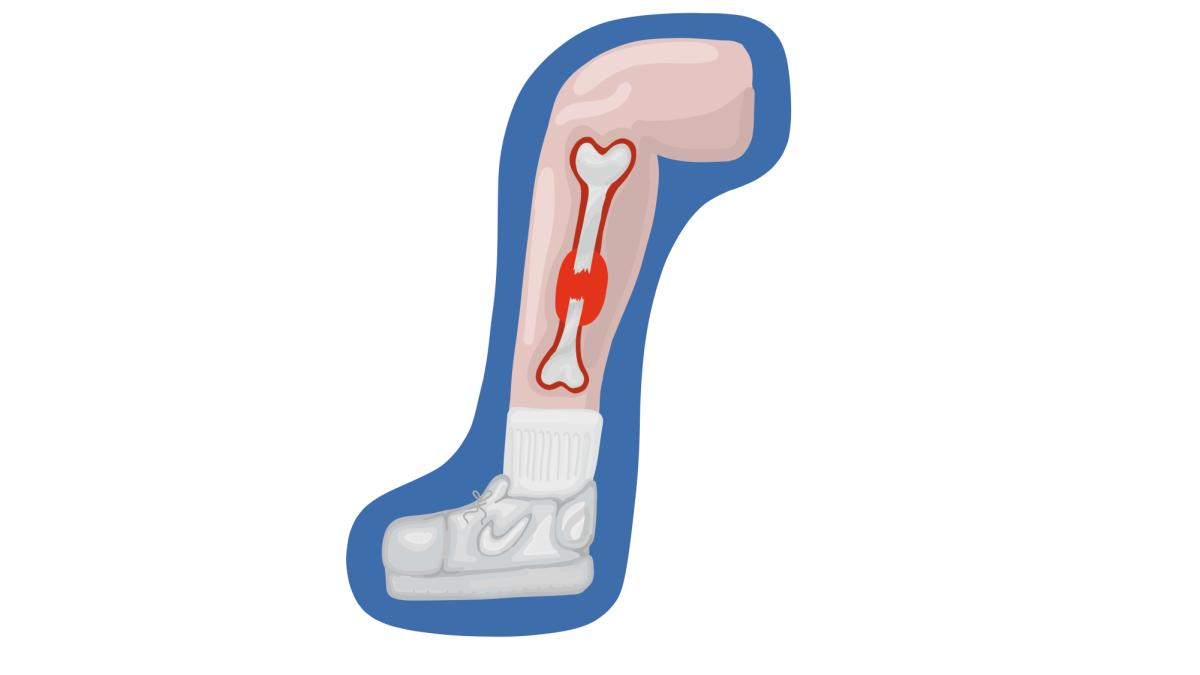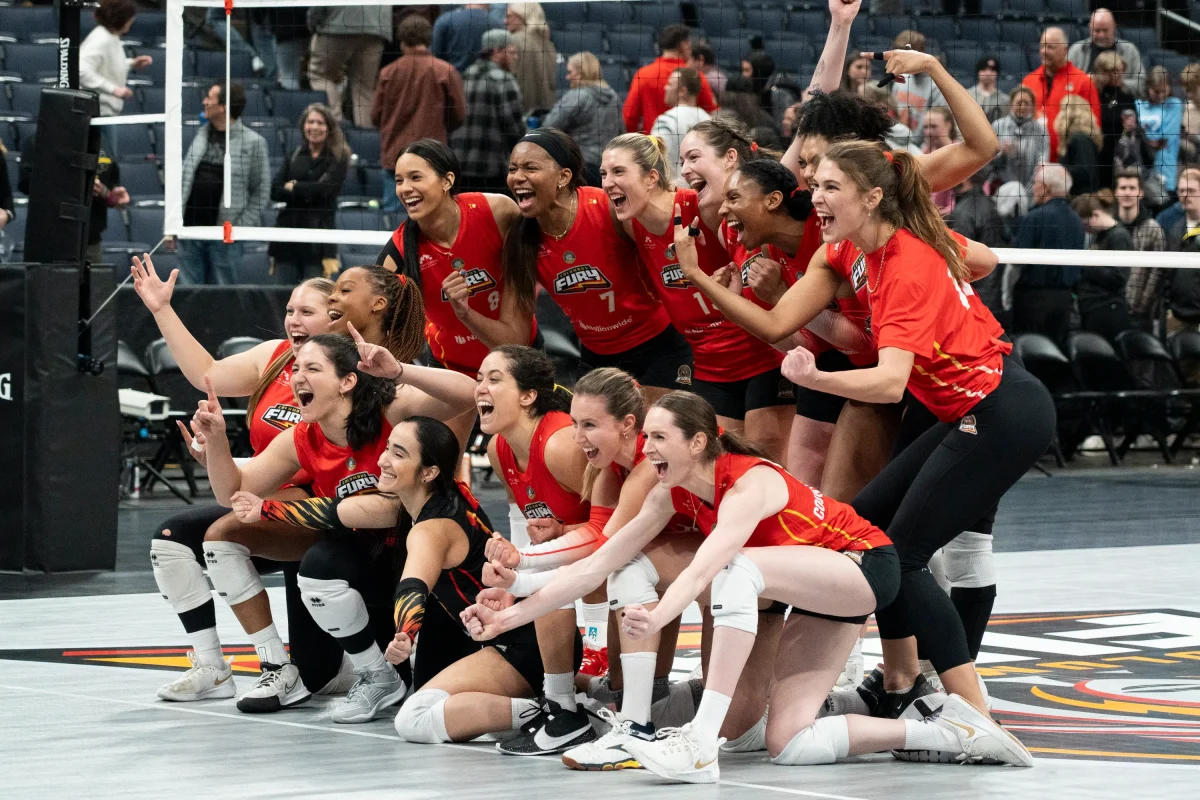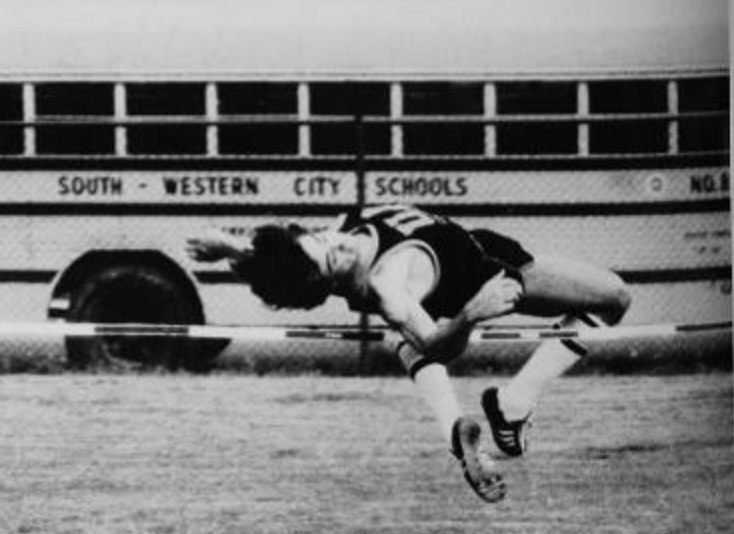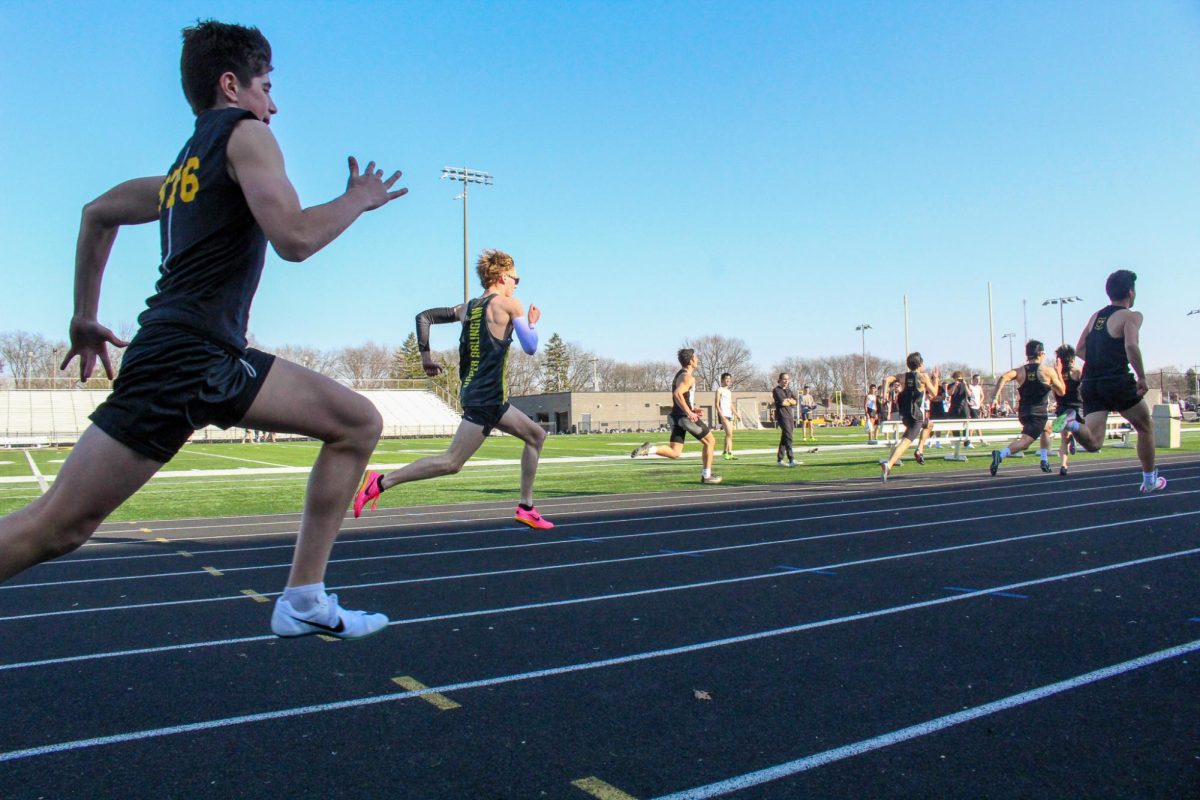Everyday people’s identities stay hidden behind an oversized costume that holds the history of a team or program. While some might wonder who is behind the costume, others might wonder what the costume even is.
In 1928, Upper Arlington schools formed a committee with a goal to decide on an athletic team name. According to The Historical Marker Database, high school students Wayne Geissinger and Dallas Head proposed the Golden Bear. In the 1929 edition of Norwester, a Golden Bear made its first appearance on the front cover. Since then, the Golden Bear has represented the community of Upper Arlington. The Upper Arlington Golden Bear represents the “attractive” but “durable” traits of UA.
Girls soccer goalkeeper, Sally Patton, is living out her senior year to its fullest. In a spur of the moment decision, Patton concluded that she wanted to be the Upper Arlington Golden Bear mascot at least once. She suited up and went out into the crowd during the Upper Arlington vs. Olentangy Orange football game.
“I kind of did it on a whim,” Patton said. “I was like, ‘Hey, wouldn’t it be cool if I was the bear?’”
With the end of her senior year fast approaching, Patton felt that she should do what she wants and have fun doing it.
“I’ve never done anything like that before, so might as well try it before I go off to college,” Patton said.
Unlike most mascots, Patton has no problem with unveiling her secret identity.
“I don’t tell people [i’m the mascot],” said Patton. “But if they ask, I’ll say it. It spreads around once one person knows.”
Patton’s short lived mascot experience of one day taught her about community.
“I went up to [one of the kids at the game] and he was like, ‘I have a picture of you on my wall, you’re on my shirt,’” Patton said, describing an experience she had as the mascot. “It brings a lot of common ground—everyone just rallies around the bear.”
Patton knows about the importance of fans and student sections from her time on the girls varsity soccer team.
“I think [school spirit] is so important,” Patton said. “The amount of pressure and adrenaline you get from knowing people are watching you is huge. Having that school spirit to go and support your own school just brings so much more competitiveness.”
Patton had the time of her life under the Friday night lights, and enjoyed all the advantages that come with being a mascot.
“Just getting to be on the field or the court or wherever [is the best part],” Patton said. “And interacting with the young kids is so fun.”
Patton values her connection with people, whether the mask of the Golden Bear is on or off. With her job as the Golden Bear and her high school career coming to an end, she hopes to leave behind a bit of advice.
“The people you surround yourself with are legit the most important thing in your high school experience,” Patton said.
Along with mascots, student-athletes work hard in their sports and can use all the encouragement and spirit they can get from their school. Student-athlete Ciarnin Maloney has a strong opinion on what school spirit means to him.
“School spirit means showing up to the football games every Friday night and seeing the big student section all ‘themed’ up and having a great time,” Maloney said.
The face of the Golden Bear is everywhere in Upper Arlington as a representation of the community as a whole.
“The bear mascot for UA is absolutely awesome and it portrays our school spirit very well,” Maloney said.
Maloney played on the boys junior varsity basketball team last winter, but would love to get the same love and appreciation as our varsity teams.
“I wish the mascot would show up to every single one of our games,” Maloney said. “Seeing the mascot there would really show our team spirit and how UA comes together as a community to support their teams.”
A few decades after Upper Arlington decided on their mascot, Ohio State students Ray Bourhis and Sally Huber suggested the Buckeye to represent Ohio State in November of 1965. The debut of Brutus Buckeye was at the Ohio State vs. Iowa football game. Brutus was originally paper-mache, but later was rebuilt in fiberglass.

This cute and friendly-looking Brutus was shortly replaced in 1975 by a not-so-friendly looking mascot. Ohio State fans, students, and alumni claimed the updated Brutus “squinting eye” and “vicious sneer” was unlikeable. The university quickly switched back to the loved fiberglass mascot, with two fluffy eyebrows added. In the ‘80s, a more modern looking Brutus appears. This new Brutus wore a jersey and the performer was remembered as “friendly” to fans. Going into the 2000s, Brutus remained the same skeleton just with minor touch-ups. He gained a little more muscle and appeared to “get a tan in the sun” according to Ohio State fans. Finally, in 2007, Brutus was inducted into the Mascot Hall of Fame.
Mascots have many pieces and parts that come together to make a mascot come to life. These little things range from the way mascots appear to fans to the physical movements and the liveliness the mascot brings. The Ohio State University mascot coach, Raymond Sharp, has been leading Brutus the Buckeye since 2013 with two National Mascot Championship Competition victories. Sharp spends his time being a mentor to the student athletes who wear the Brutus the Buckeye costume and informing people who Brutus’s character is. He aims to keep Brutus the Buckeye constantly thriving and growing to stay relevant, innovative, and entertaining.
When the spring semester rolls around, the tryout process begins. Coach Sharp starts with informational meetings in February for anyone who is a full time main campus student at The Ohio State University. In March, students have the opportunity to put on the head of Brutus the Buckeye and get basic mascot training in. Lastly, when April rolls around, the official tryout season begins. Tryouts at The Ohio State University include both in-costume and out-of-costume elements.
“The costume element evaluating has to do with how well they portray Brutus in different situations,” Sharp said “Then the out of costume element speaks more to the character of the individual trying to portray Brutus.”
At the end of the tryouts, several individuals are chosen to be part of the team.
Having the privilege of wearing a mascot costume also requires the physical ability of running around in a thick, heavy, and hot costume while making an attempt to keep fans engaged in a sporting event. U.S. News said that some collegiate mascots have to master the persona of a mascot character. They might have to memorize things like the way the mascot walks, poses for a picture, or even how they interact with fans.
On top of the physically demanding aspect of being a mascot, students who apply to be a mascot might even have to meet certain GPA requirements. Mascots also have to be fully committed to keeping their identity secret and staying committed to the busy schedule of games they have to attend. Each college differs in the amount of time a person spends in their mascot costume, but most colleges require mascots to attend every football game and every basketball game with an additional few games in other sporting categories.
At Syracuse University in New York, the time commitment can go up to 25 hours in one (busy) week. At Syracuse, they do have a team of 12-15 students that switch out who is being the mascot for events. This helps make the longer and busier weeks less stressful. These students do not attend sporting events that conflict with their exams.
Why would a student voluntarily sign up for this? Well, in some colleges being a mascot is equal to being a student-athlete. Some colleges might offer strength and conditioning training or tutoring for the mascot. They also can receive gear similar to what collegiate athletes receive. If you get lucky, you can get offered a stipend or a small scholarship by a university to be a mascot. It is most common for college mascots to be replaced every four years because mascots tend to commit for all four years.
At The Ohio State University, they are working towards being able to offer students a full ride scholarship for being a mascot.
“They do receive some scholarships to help cover tuition costs, book costs, living costs, or whatever they need, partially covered,” Sharp said.
Mascots like Brutus Buckeye can give an entire state an identity. College mascots are some of the most identifiable figures along with the man that dons the mascot heads on College GameDay: Lee Corso.
College GameDay has been airing on TV since 1987. Lee Corso has been on the show since its inception and shortly after started to pick the winning team by putting on the school’s mascot head. The mascot head to begin this tradition was Brutus Buckeye. He chose the Buckeyes in 1996 over the Penn State Nittany Lions, the final score being 38-7 Buckeyes. Since then, Corso has made over 400 picks and worn a mascot head for over 400 Saturdays. Corso suffered from a stroke in 2009, but his dedication to College GameDay remained, and he stayed a part of the College GameDay team. Today, Corso is 88 years old and still attending most editions. Last season, he missed five editions of College GameDay. SportingNews said that Corso should be back to his full-time role in the 2023 season.
Brutus Buckeye was part of an important moment in college football history, and has always been the face of The Ohio State University. Kids ask Brutus for pictures and alumni enjoy the nostalgia that comes with seeing their mascot on TV or at a sporting event. Brutus, along with many of college football’s most memorable mascots, has left his mark on college sports.







